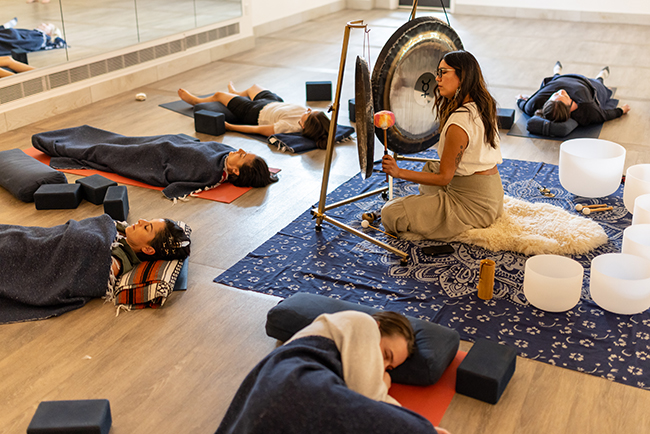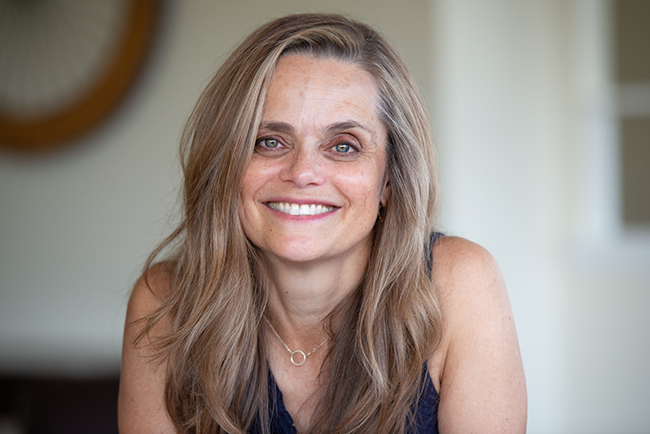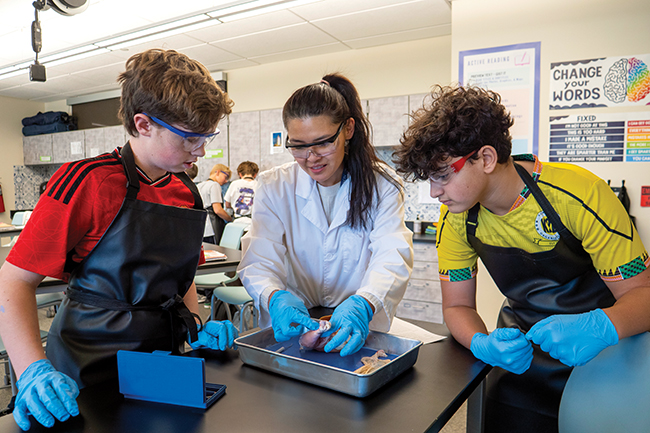Learning the Sandman’s Schedule
13 Dec 2021
Scientific advances make it possible for researchers to analyze circadian rhythms with a single blood draw.
By Sara Bruskin
Fellow night owls, imagine this scenario: You walk into work and hand your boss the results of a recent blood test, indicating that your circadian rhythm follows a later pattern than those of your fellow employees. You let your boss know that a 9 a.m. clock-in time really isn’t good for your particular body, so you’ll start showing up at 10:30 instead. We can’t guarantee that would go over well, but it’s a nice fantasy for those of us who aren’t naturally predisposed to an early start.
Whether you’re a night owl, early bird or somewhere in between, we can all thank our circadian rhythms for those predilections. They determine when we usually feel tired at night and when we naturally wake up in the morning (if the dreaded alarm hasn’t already taken care of that).
Sleep Science
Circadian rhythms are set by something called the master circadian pacemaker or master oscillator, which is located in the suprachiasmatic nuclei (SCN) of the brain’s hypothalamus. Our eyes convey information about light levels in our environment to the SCN so it can determine when it’s daytime and when it’s nighttime, and thus, when we should be sleeping—this is why screen time right before bed can make it harder to fall asleep.
While some of us have a general idea of when our body’s internal clock would prefer us to sleep and wake, getting a specific assessment of our circadian rhythms could help with more than a healthy sleep schedule. For instance, there are neurological disorders that manifest in disruption to circadian rhythms including schizophrenia, narcolepsy, Alzheimer’s disease, Parkinson’s disease and more, which would be easier to diagnose if we could assess those rhythms.
Other aspects of the human body follow circadian rhythms, such as blood pressure levels, body temperature and the release of hormones. Circadian rhythm is highly relevant for optimizing physical activity as well. Studies have shown that the body follows a specific rhythm during exercise and can point to peak performance times for specific activities. Our metabolism gives us more or less energy at certain times of day, and our digestive organs produce higher amounts of enzymes and hormones when our internal clock thinks it’s an optimal time to eat. Certain medications are also more or less effective at different times in our body’s cycles.
Optimizing for Health
The medication-circadian rhythm connection shows particular promise, according to physiologist Christopher Depner, Ph.D. He says that up to 50 percent of all drug targets have some circadian regulation to them. “If we can dose a drug at the most effective circadian time of day for an individual patient, then we can theoretically use a small dose of the drug to achieve the same benefit, and thus, a smaller dose will result in smaller/less side effects.”
This drug-targeting applies to more than just daily pharmaceutical doses. A study published by the University of Birmingham in England in 2016 found that seniors (aged 65+) who received flu vaccines in the morning showed higher levels of influenza antibodies one month later, compared to study participants whose vaccines were administered in the late afternoon. Circadian rhythms tend to follow earlier patterns as we age, and vaccine timing could be further optimized on a personal level with a reliable way to test those rhythms.
While working as an assistant professor of integrative physiology at CU Boulder (he’s since moved on to teach at The University of Utah), Depner was developing a single-draw blood test that could determine the daily schedule of someone’s circadian rhythm. Previously, a highly accurate assessment was only possible with 24-hour melatonin tests, during which the person being analyzed has to stay in a dimly lit room and undergo blood or saliva collection every hour for a full day. Those samples are used to measure levels of the hormone melatonin, which your body releases to induce and maintain sleep.
Not surprisingly, spending 24 hours in a lab doesn’t easily fit into the average person’s schedule. This is one reason the tests are mostly done for research purposes rather than commercial medical applications right now. “It has been slow to translate these types of analyses into the clinic because they are expensive and time consuming,” Depner explains, “and many clinicians are not familiar with how to make clinical actions or recommendations with this knowledge.”
To develop a more practical test for clinical applications, Depner and Kenneth Wright, Ph.D.—a professor of integrative physiology at CU Boulder—conducted a 14-day study at CU Anschutz Medical Campus in Aurora. Sixteen volunteers spent the entire two weeks in a sleep lab, where they had their blood drawn regularly for the 24-hour melatonin test to set a standard for comparison.
After figuring out which metabolites—small molecules that result from various functions of the metabolism—were significant indicators of circadian functions, Depner and Wright used a single blood draw to assess them and compared that result to those of the 24-hour melatonin assessment. The data from the two tests was remarkably similar, with the metabolomic results only deviating slightly; the circadian rhythms indicated were consistently within one hour of the melatonin-indicated results.
With a single blood draw yielding such accurate results, Depner hopes his work will help make circadian testing more accessible, and that in turn will advance the field of circadian medicine. While researchers already know many ways these tests could be used to improve health and lifestyle choices, the expanded research possibilities could also help us learn more about other biological processes that are impacted by circadian rhythms.
Don’t rush out to ask your doctor for a lab order just yet; Depner estimates it will be another five years before the technology is ready for clinical applications, and more time beyond that to secure FDA approval.
In the meantime, he says, “The best recommendation is to keep as consistent as possible your sleep and wake times, minimize electronic light at night, and maximize early morning sunlight exposure. These sleep hygiene habits will help stabilize and entrain your clock and help you feel alert in the morning and sleepy at night.”












